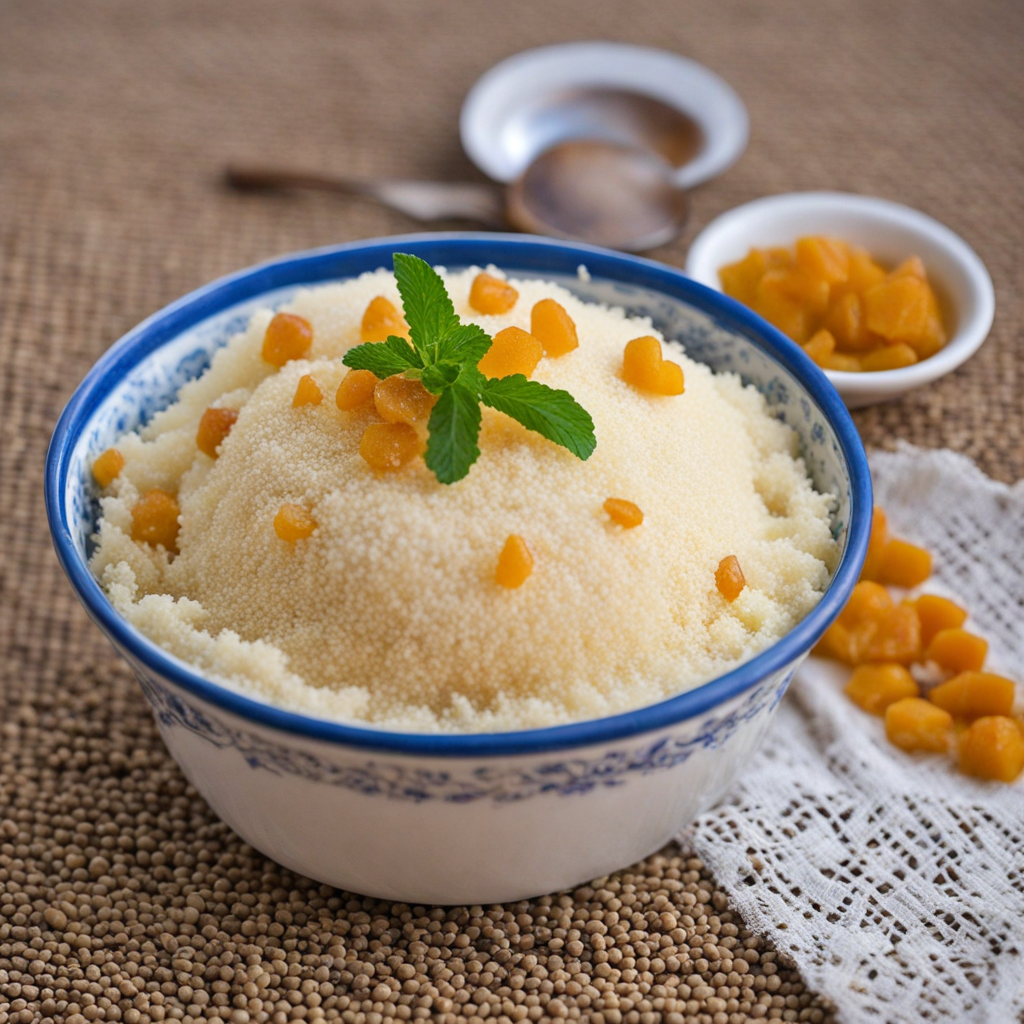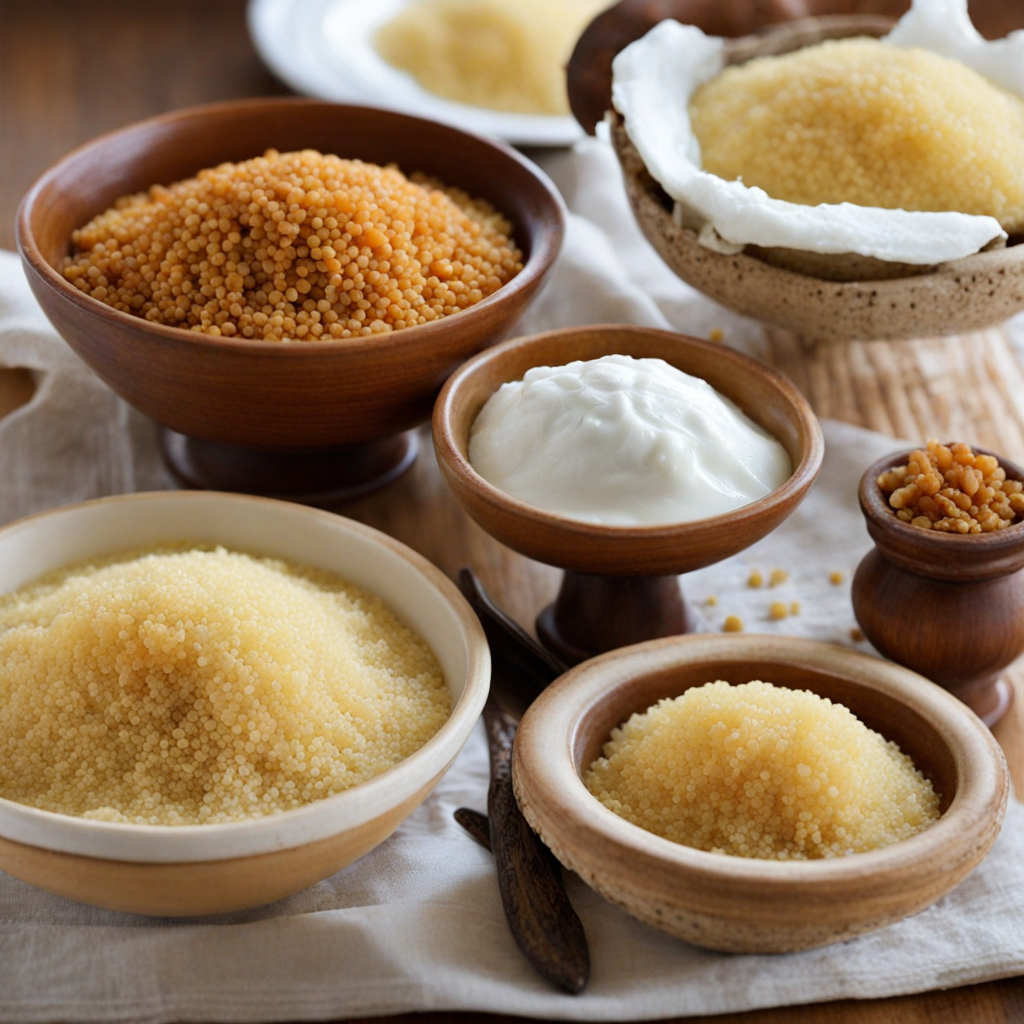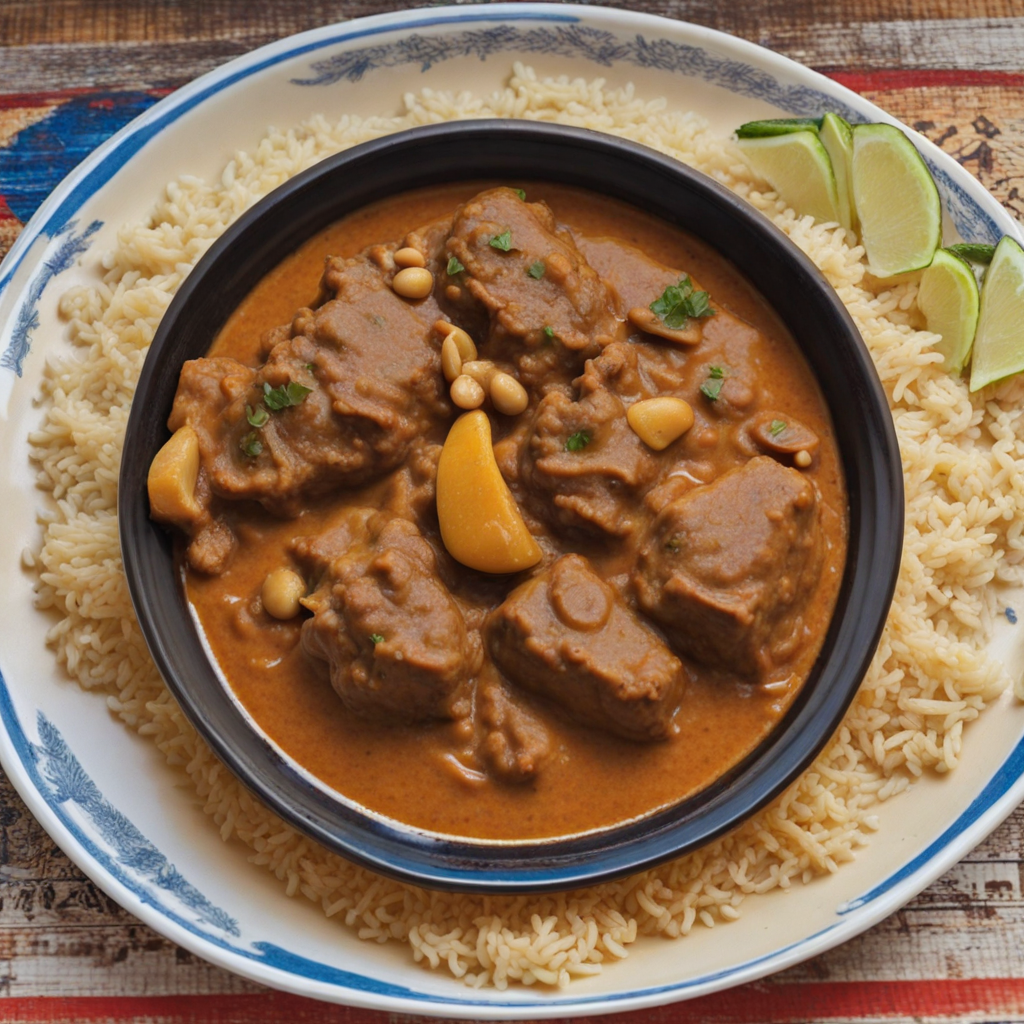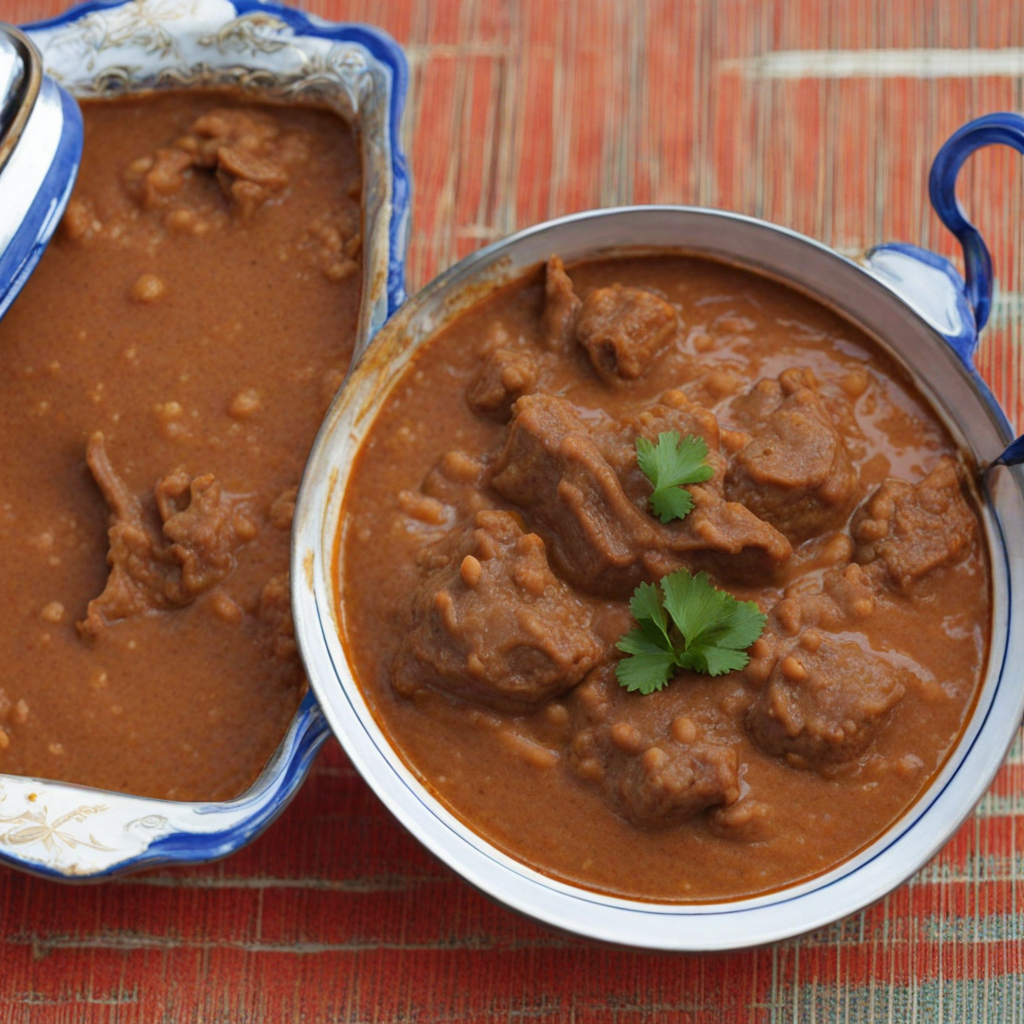Thiakry
Thiakry, a delightful Senegalese dessert, is a creamy and sweet dish that tantalizes the taste buds with its unique texture and flavor. At its core, thiakry is made from fermented millet or couscous, which is steamed until fluffy and then combined with a rich, sweetened yogurt. This base provides a luscious creaminess, making it a comforting treat that can be enjoyed at any time of the day. The addition of sugar and sometimes honey elevates the sweetness, while a sprinkle of cinnamon or vanilla adds a fragrant warmth that complements the dish beautifully. What sets thiakry apart is the burst of flavors and textures that come from its toppings and mix-ins. Often, it is garnished with fresh fruits like mangoes, bananas, or berries, adding a refreshing contrast to the rich creaminess of the yogurt. Some variations also include nuts or seeds, which introduce a delightful crunch, creating a harmonious balance of soft, creamy, and crunchy elements in every bite. The dish is not only visually appealing but also offers a delightful symphony of flavors that makes each mouthful an experience to savor. Thiakry is more than just a dessert; it embodies the essence of Senegalese culinary traditions, where wholesome ingredients are transformed into something extraordinary. It's often enjoyed during special occasions, celebrations, or simply as a comforting indulgence at home. The cultural significance, combined with its delicious taste, makes thiakry a must-try for anyone looking to explore the diverse and rich flavors of West African cuisine. Whether served as a dessert or a sweet breakfast option, thiakry is sure to leave a lasting impression on your palate.
How It Became This Dish
The History of Thiakry: A Culinary Gem of Senegal Origins and Cultural Significance Thiakry, also known as "tchere," is a beloved dish from Senegal, a West African nation known for its vibrant culinary landscape. This delicious dessert is primarily made from fermented millet or rice, combined with yogurt or milk, and often sweetened with sugar and flavored with vanilla, cinnamon, or other spices. While Thiakry is a staple in Senegal, its origins can be traced back to the broader Sahel region, where millet and other grains have been cultivated for thousands of years. Millet, a drought-resistant grain, has been a crucial food source in West Africa, particularly in rural areas where climate conditions can be harsh. The preparation of Thiakry reflects the region's agricultural practices and cultural traditions, transforming simple grains into a delightful dish that brings communities together. The dish is not only a testament to the resourcefulness of the people but also a celebration of the rich flavors and textures found in Senegalese cuisine. Thiakry is traditionally served during special occasions and gatherings, including weddings, religious celebrations, and festivals. Its presence at such events highlights its cultural significance as a symbol of hospitality and communal joy. The dish embodies the spirit of Senegal, where food is often seen as a medium for connection, fostering relationships, and celebrating life. The Evolution of Thiakry The evolution of Thiakry over time is deeply intertwined with the changes in Senegalese society, trade dynamics, and the introduction of new ingredients. The dish has its roots in age-old practices of grain fermentation, which have been used for centuries not only for preservation but also for enhancing flavors and digestibility. The fermentation process transforms the grains, giving Thiakry its unique tangy taste and creamy texture. As colonial influences began to shape the culinary practices of Senegal in the late 19th and early 20th centuries, new ingredients such as sugar and dairy products became more accessible. Although traditional Thiakry was often made with fermented millet, the adaptation to using rice—a crop introduced during colonial times—emerged as a popular variation. This shift reflected the changing agricultural landscape and the evolving preferences of the Senegalese palate. In contemporary Senegal, Thiakry has transcended its traditional roots and has evolved into a versatile dish that can be enjoyed in various forms. While the classic preparation remains widely cherished, creative adaptations have emerged, incorporating fruits like mangoes or bananas, nuts, and even chocolate. These innovations illustrate the dynamic nature of Senegalese cuisine, showcasing the ability to blend tradition with modern influences while keeping the essence of Thiakry intact. Thiakry in Modern Senegal Today, Thiakry continues to hold a special place in the hearts of many Senegalese people. It is commonly found in homes, restaurants, and street food stalls, accessible to both locals and visitors. The dish is often prepared for breakfast, served as an afternoon snack, or enjoyed as a dessert. Its versatility makes it suitable for various occasions, whether a casual family meal or a festive gathering. In urban areas, Thiakry has also become a symbol of Senegal’s culinary heritage, with chefs and food enthusiasts embracing the dish as part of the country's gastronomic identity. Various culinary festivals and events celebrate traditional Senegalese dishes, and Thiakry often takes center stage, showcasing the country’s commitment to preserving its food culture while embracing innovation. With the growing global interest in African cuisine, Thiakry has begun to capture the attention of international foodies and chefs. Its unique flavor profile and rich nutritional content make it an appealing option for those interested in healthy and diverse eating patterns. As travelers explore Senegal, they often seek out Thiakry, not only to indulge in its deliciousness but also to connect with the local culture and traditions. Thiakry Beyond Senegal While Thiakry is most closely associated with Senegal, variations of the dish can be found in other West African countries, often under different names. For instance, in Mali, a similar dish called "tô" is made with millet and can be sweetened and served in a similar manner. These regional adaptations highlight the interconnectedness of West African culinary traditions, with each community adding its unique touch to the dish. In recent years, the diaspora communities have played an essential role in promoting and preserving Thiakry outside of Senegal. As Senegalese immigrants establish themselves in different parts of the world, they bring their culinary traditions with them, sharing dishes like Thiakry with a broader audience. This has led to the emergence of African restaurants and food festivals in various countries, where Thiakry is showcased alongside other traditional dishes, fostering cultural exchange and appreciation. Conclusion Thiakry is more than just a dish; it is a representation of Senegalese culture, history, and community. From its ancient origins as a fermented grain dish to its modern iterations enjoyed worldwide, Thiakry reflects the resilience and adaptability of Senegalese culinary traditions. Its significance extends beyond the kitchen, serving as a reminder of the ties that bind people together through shared meals and experiences. As the world continues to embrace the diversity of global cuisines, Thiakry stands as a testament to the richness of West African food culture, inviting everyone to savor the flavors of Senegal and the stories they tell. Whether enjoyed at a bustling market stall, at a family gathering, or in a fine dining setting, Thiakry is a dish that encapsulates the heart and soul of Senegal, celebrating the joy of food as a universal language.
You may like
Discover local flavors from Senegal







